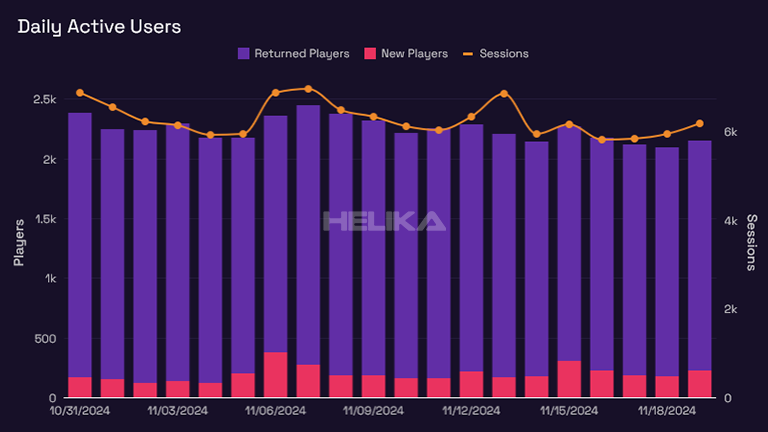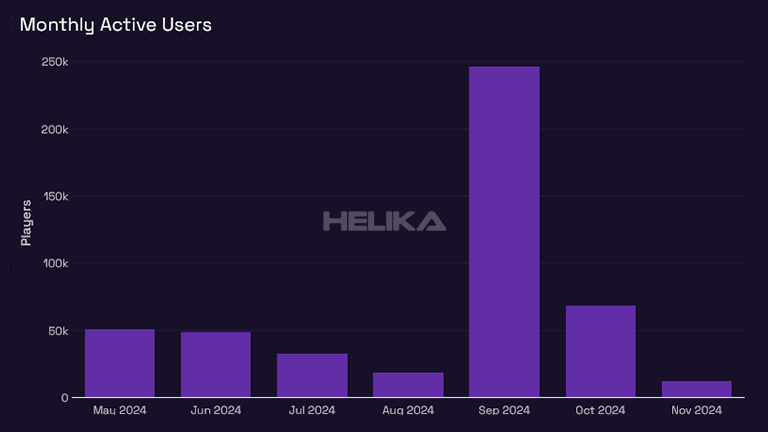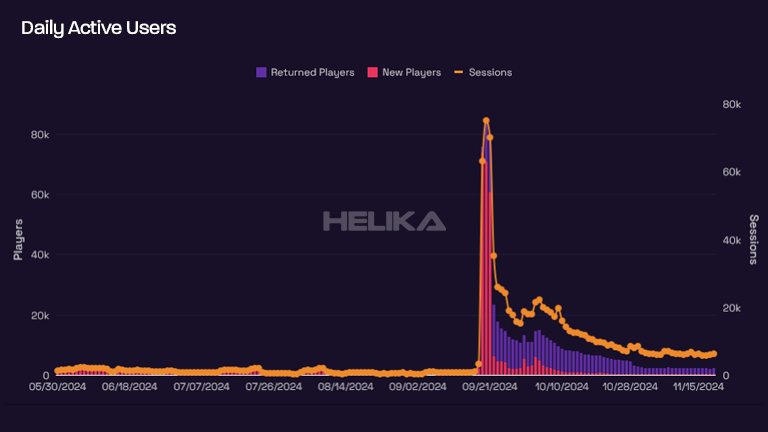The DAU/MAU ratio is a metric that game analysts use to measure the success of a mobile game. It is expressed as a percentage and represents the number of daily active users (DAU) compared to the monthly active users (MAU). This ratio shows valuable insights into how engaged and loyal a game’s user base is. User retention is a key factor for any successful game, as it directly impacts revenue and overall success.
Understanding User Behavior Through the DAU/MAU Ratio
The DAU/MAU ratio provides deeper insights into user behavior. It helps identify how frequently users are engaging with the game on a daily basis. A high DAU/MAU ratio indicates that a large proportion of monthly users actively engage with the game on a daily basis. This suggests strong user engagement and a loyal user base.


On the other hand, a lower DAU/MAU ratio could indicate that users are not as engaged or may be losing interest in the game over time. This could also suggest potential retention issues, which can ultimately impact revenue and overall success.
Let’s imagine a ratio of 50%. This means that, on average, half of the monthly active users engage with the game every day. This is a positive sign, as it shows consistent user engagement over time. However, if this ratio drops to 30%, it could suggest that only a third of monthly users are engaging daily. This could indicate potential retention issues and the need for further analysis to understand user behavior and improve retention strategies.
If there is a high monthly active user base but on a daily basis, only a small percentage of users are engaging with the game, it could suggest that the game needs some sort of factor that encourages daily play. This can be some sort of daily rewards that can only be claimed if the user logs in daily, or time-sensitive events and challenges that incentivize users to play daily.
Now, if there is a high daily active user ratio but a declining monthly active user base, it could suggest that users are highly engaged in the short term but are not sticking around for the long haul. This could be due to various reasons such as lack of new content or updates, difficulty progressing in the game, or simply losing interest over time.
In this case, analyzing player feedback and implementing changes to improve overall user experience and retention can help maintain a healthy balance between monthly and daily active users. It’s not always clear exactly why users are leaving, so it’s important to work with a professional partner with experience in game analytics such as Helika to truly understand and address the root causes of user churn.
How To Calculate DAU/MAU Ratio
The formula: (#) Daily active users / (#) Monthly active users = (%) DAU/MAU Ratio
Above, we discussed the importance of monitoring and maintaining a healthy DAU/MAU ratio. But how do you calculate it? It’s actually quite simple.
Step #1 – Determine the number of daily active users (#) by looking at your game’s analytics over a specific time period (such as a month).
Step #2 – Determine the number of monthly active users (#) during that same time period.
Step #3 – Divide the daily active users by the monthly active users and multiply by 100 to get the percentage (%) of DAU/MAU ratio.
For example:
If your game has 10,000 daily active users over a month and 50,000 monthly active users in that same month, DAU/MAU ratio = (10,000 / 50,000) x 100 = 20%
This means that for every 100 users who play your game in a month, 20 of them are active on a daily basis. As a tip, it’s helpful to track this ratio over time and compare it to industry benchmarks for a better understanding of your game’s performance.
If all these seems complicated to you, feel free to reach out to our team here at Helika for assistance with game analytics and understanding your DAU/MAU ratio. A good DAU depends on your goals as a game developer and we can help you set realistic targets for your game.
Remember, tracking and analyzing your DAU/MAU ratio is an important step towards maintaining a successful and engaging game but it’s not the end all be all. Knowing what to practically do with this information is what will ultimately lead to improving your game and retaining more players.
Practical Applications After Understanding Your DAU/MAU Ratio
To gain deeper insights beyond just a vanity metric, it’s important to analyze your DAU/MAU ratio in conjunction with other metrics and data points. Here are some practical applications for using your DAU/MAU ratio:
- Identifying user churn: A low DAU/MAU ratio may indicate that a significant portion of your monthly active users are not returning to play on a daily basis, potentially indicating churn. By understanding this ratio and tracking it over time, you can identify patterns and make adjustments to improve retention.
- Measuring engagement: A high DAU/MAU ratio indicates strong engagement from your user base. It shows that they are consistently playing your game on a daily basis instead of just trying it once and never returning.
- Comparing performance with competitors: Tracking your DAU/MAU ratio can also give you insight into how well your game is performing compared to similar games in the market. This can help inform decisions on game updates and improvements to stay competitive.
- Monetization opportunities: A high DAU/MAU ratio can also indicate a strong potential for monetization. With engaged daily users, there may be more opportunities to implement in-game purchases or advertisements that will generate revenue.
- Identifying user preferences: Analyzing your DAU/MAU ratio in combination with other metrics can also give you insights into what features or aspects of your game are most appealing to players. By understanding what keeps users coming back on a daily basis, you can make informed decisions on future updates and content.
Overall, understanding your DAU/MAU ratio is essential for any game developer looking to track and improve user retention, engagement, and monetization. By regularly monitoring and utilizing this key metric, you can make data-driven decisions that will ultimately lead to a more successful and sustainable game.

The number of unique users plays a significant role in the success of any game. However, it is also crucial to focus on retaining these users and keeping them engaged over time. By striving for a higher DAU alongside consistently measuring MAU metrics, game developers can create a more engaging and profitable experience for their players.
Final Thoughts
The DAU/MAU ratio is a powerful tool that can help identify the long term potential and likelihood that new users will continue playing your game for months to come. A low ratio may indicate issues with the retention rate and engagement, while a higher ratio can signal a strong and loyal user base. It is important to measure this key performance indicator alongside other forms of data such as user feedback and market trends in order to fully understand the health of your game.
When combined with other engagement metrics, potential issues that are hindering your game’s potential can be resolved. As an important metric that can be complex to gather and interpret, it’s helpful for game developers to partner with an advanced data analytics company such as Helika to receive customized insights and strategies tailored to their specific game.


